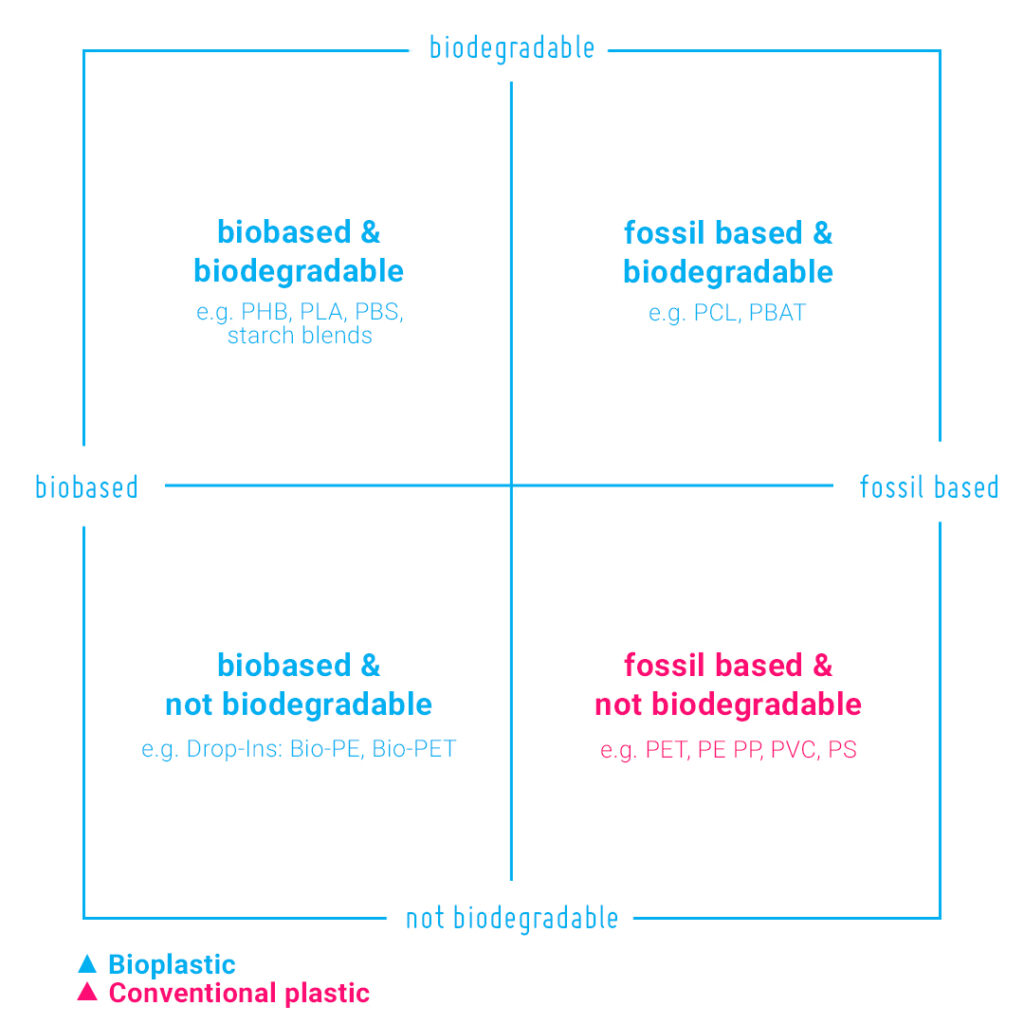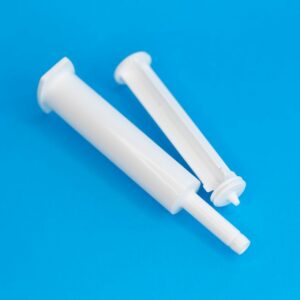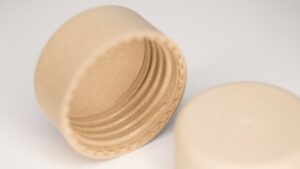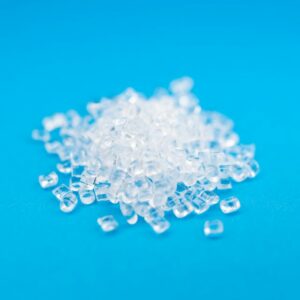
The future of plastics
In this article, we look at how to generate value streams from hospital waste and recycle it into the production of new medical devices and pharmaceutical packaging. In short: how the circular economy succeeds in healthcare.
The term bioplastic is a bit complicated. But what is a bioplastic? We explain that in all its facets in the following.

Simply put, bioplastics can be made from plants, are converted by nature into CO2 and water depending on the grade, and there are bioplastics that could be built into your body without harming you. However, a bioplastic doesn't have to do all three at the same time - most only manage one or two of them. This leads to a large family of materials that all claim the title of bioplastic correctly, but are useful for very different applications. That's why BIOVOX helps you find and use the right bioplastic for the application. Let's dive deeper:
Plastic is a mixture of different substances that together form a malleable material. Kind of like a cake or bread dough. Plastic consists mainly of long chains of atoms called polymers. These polymers are like the flour and ensure that the plastic holds together and has substance. The plasticity of the polymer is also the reason for the name "plastic".
Polymers are virtually always mixed with fillers and additives such as fibers, biomass as in our Regiogradables, mineral powders or property enhancers such as plasticizers. This is necessary to give the material the properties it needs, such as strength, flexibility, color, surface finish, etc. This is necessary to give the material the required properties, such as strength, flexibility, color, surface finish, etc.
For all these additives, there are non-toxic and compostable alternatives & variants that we use exclusively. So you can think of the plastic like pastries. There are different types of flour (the different polymers). In addition, there are other ingredients depending on the application. Out you get the right dough for the desired pastry - a bread for a sandwich or a cake for dessert.


A bio-based plastic is made from renewable biomass sources such as plants. For example, they are made from starch from corn/rice/potatoes or sugar from sugar cane/sugar beets. But there is also cellulose from trees/cotton, vegetable oils from seeds, and more. A bio-based plastic can be partially or fully bio-based.
When decomposition occurs through biological activity, a material may call itself biodegradable. A special variant of this is compostable plastic or compostable bioplastic. If enough oxygen is available for the microbes, fully biodegradable materials leave behind nothing but CO2, water, minerals and possibly slower-degrading biomass.
Above all, however, no "eternally" durable microplastic particles remain if plastic and environment fit together!
Biocompatible materials can be used in contact with living beings without causing any negative effects. This is very important for materials used in medicine, such as implants, wound dressings and similar products.



There are conventional plastics that come from fossil resources and are not biodegradable or biocompatible.
In contrast, there are bioplastics that are obtained from renewable raw materials and are partially biodegradable and/or biocompatible. However, there are also biobased plastics that are not biodegradable and/or not biocompatible.
On the non-biobased side, there are bioplastics that are made from fossil resources but are biodegradable. And there are some that are fossil, not biodegradable, but biocompatible - these are used primarily in medical applications.
There are advantages and disadvantages for each type of plastic and bioplastic. They all excel in different use cases, but that is a topic for a separate post on BioWiki.
We are experts in the field of sustainable materials and select for you the most sustainable material suitable for your application.
In line with this, we have developed our Innovation Bundles - for everyone who wants to start the transformation to more sustainable materials.

In this article, we look at how to generate value streams from hospital waste and recycle it into the production of new medical devices and pharmaceutical packaging. In short: how the circular economy succeeds in healthcare.

In this article, we look at how to generate value streams from hospital waste and recycle it into the production of new medical devices and pharmaceutical packaging. In short: how the circular economy succeeds in healthcare.

Your products are made from bioplastics now – great, but how do you communicate this switch to your target group? In this article, we explain how to communicate sustainability authentically.

Plastics have been an essential part of medical technology for decades. In order to secure medical care for mankind, the material must therefore be handled in a sustainable manner. One option: Recycling! But can recyclates be used in medical technology?

Your products are made from bioplastics now – great, but how do you communicate this switch to your target group? In this article, we explain how to communicate sustainability authentically.

Which plastics can be safely used in medical technology to manufacture medical and pharmaceutical products or packaging? This and the term “Medical Grade Plastics” are explained in this short article.
BIOVOX 2024